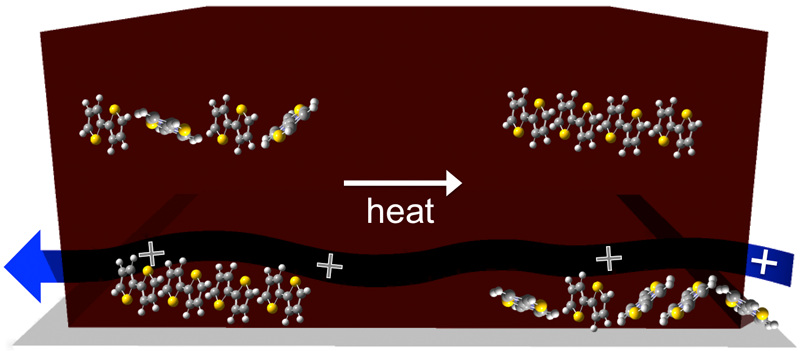

Main navigation | Main content
02/18/2014
Recent research from the research group of Professor
To order or not to order? That is the question. But if you are a polymer on a surface, the answer may not be as binary as Hamlet's. Materials scientists have long used thermal annealing to improve performance in devices such as organic solar cells and transistors. Thermal energy drives structural adjustments that improve intermolecular packing, and this has been proven ad nauseam by X-ray scattering studies. However, it is not always ordering through the bulk of a film that matters, rather its interfacial structures may dictate its behavior, and X-ray measurements rarely probe interfaces, especially the buried ones.
In a surprising twist, a recent study from Professor Aaron Massari's research group used interface specific spectroscopy to show that while the interior volume of thin films of a popular semiconducting polymer become more ordered with annealing, their interfaces actually become disordered (http://pubs.rsc.org/en/Content/ArticleLanding/2014/TC/C3TC32063D). By tracking the interfacial structures and charge mobilities in-situ and in real time during a thermal annealing treatment, the researchers confirmed that charge conduction across an interface plummeted as molecules disordered. The chemistry of the surface on which the polymer was deposited was found to have a dramatic influence on the dynamic behavior of its macromolecular guests. On some surfaces, the films could be heated to above their melting temperature and still recover their original ordering and orientation, but in other cases, what's done cannot be undone.
